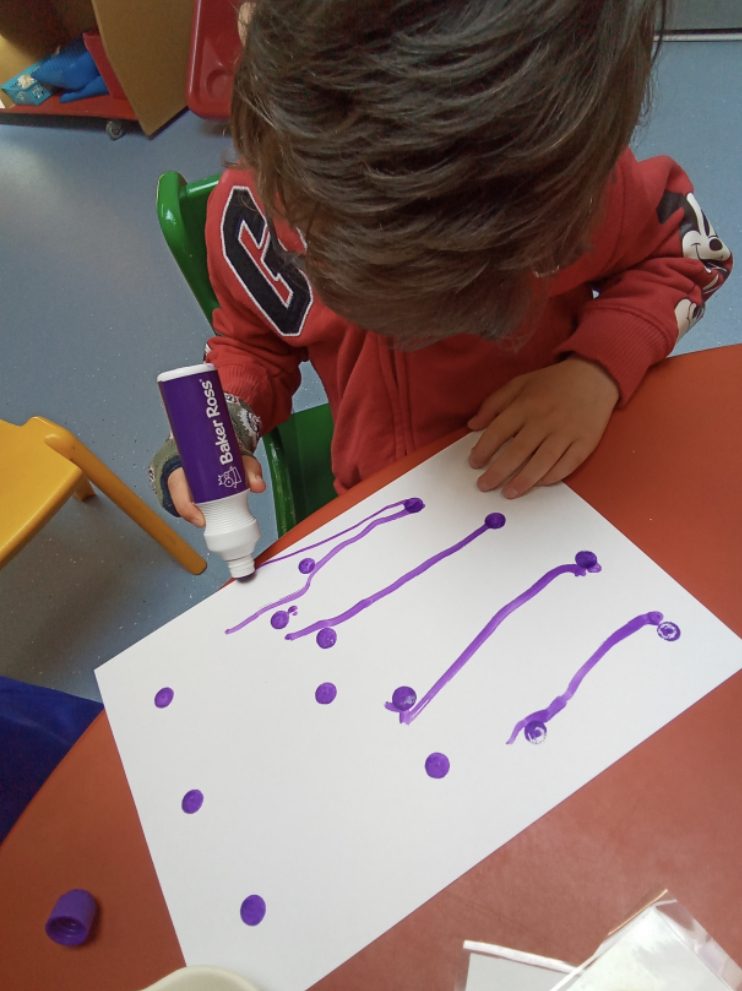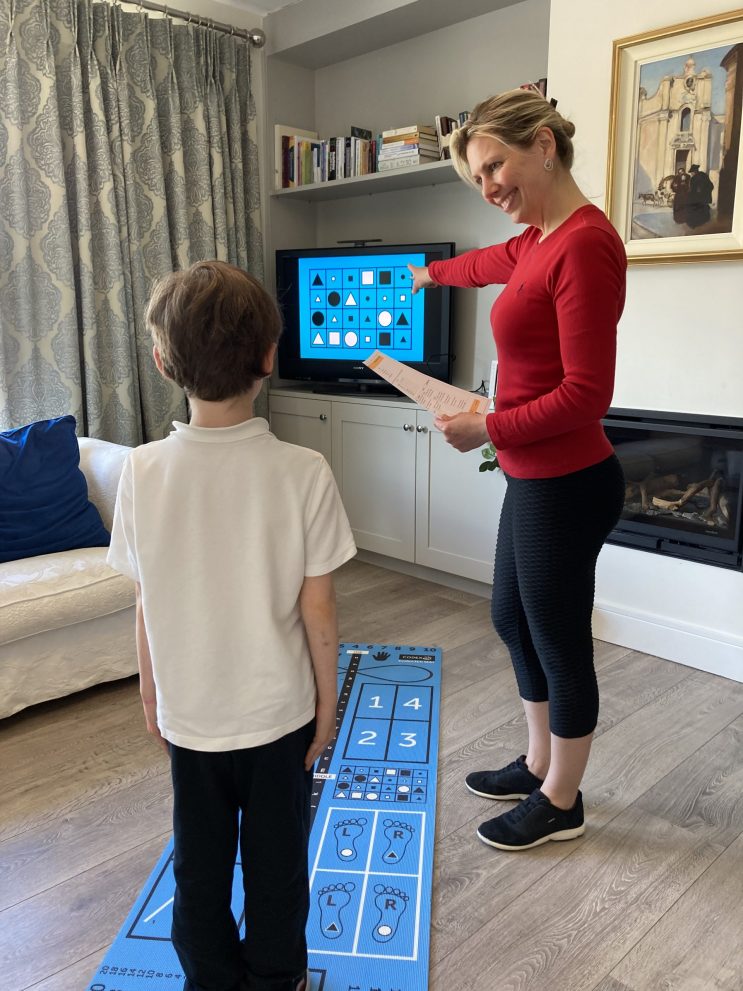Parent information
Within the Codex360 therapy sessions we can a variety of areas which may effect your child. Below you will find more specific detail about the most common areas of work we help stimulate and enhance within our sessions
Developmental Co-ordination Disorder (DCD) intervention
Developmental Coordination Disorder (DCD), also known as Dyspraxia, is a neurodevelopmental disorder that affects a child’s ability to plan and coordinate movements. Children with DCD may experience difficulties with activities that require motor skills, such as tying shoelaces, using utensils, or participating in sports.

In day-to-day life, DCD/Dyspraxia can have various effects on a child:
- 1. Motor Skills: Children with DCD may have trouble with fine motor skills (e.g., writing, drawing) and gross motor skills (e.g., running, jumping), or life skills like riding a bike and swimming. Watch my explination on my tiktok @codex360_movetolearn about riding a bike and swimming.
- 2. Self-Care: Activities like dressing themselves, brushing teeth, or tying shoelaces can be challenging.
- 3. Academic Performance: Difficulties with handwriting and other fine motor skills may impact their academic achievements.
- 4. Social Interactions: The struggle with coordination can lead to challenges in participating in sports or games, potentially affecting social interactions and self-esteem.
- 5. Emotional Impact: Frustration and anxiety may arise due to their struggles, impacting their emotional well-being.
Early identification and intervention, such as therapy, can help children with DCD improve their motor skills and overall quality of life. Encouragement and support from parents, teachers, and peers can also play a crucial role in helping them overcome challenges and build self-confidence.
Within the Codex360 programme we specilaise in assisting children with DCD (Dyspraxia) and we work individually on focused areas of concern.
Aled Hughes has specilaised in the area of Dyspraxia for the past 20 years and his experience in helping children within this area is second to none.
As all of your pages say “ Move to Learn, Learn to Move”, we work consistently within our sessions in a movement based therapy. Even when we are doing maths, numbers , sequencing and patterns we do it, whilst in locomotion ( moving ) . This “layering” process challenges cognition , the vestibular system, working memory, motor skills ALL at the same time. It is so challenging to begin with BUT with consistency of learning, a growth mindset, a clear visual reminder, visual feedback learning occurs and in turn success is seen by the child. This in turn leads to a safe, positive learning attitude and environment.
Learning to learn and break skills down into “chunks” in my sessions leads to a transfer of learning. This meaning that’s children take this attitude in school, after school classes, social setting and into homelife.
Working Memory (what exactly is it and what does it do ?)
Kids who have a hard time “staying on track” might have problems with something called working memory.
Working memory is an executive function that plays a big role in how we process, use and remember information on a daily basis.
Remembering a phone number, recalling directions, or writing an essay are all tasks that use working memory.
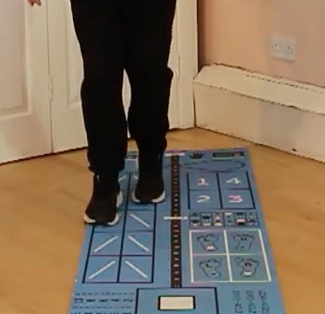
Unlike long-term memories that stay even we’re not thinking of them, working memory is more like a mental scratchpad holding all the information we need. Everyone struggles with working memory sometimes. We all forget an item from a shopping list or draw a blank trying to remember the rules of a game. But for kids with learning disorders, working memory can be a bigger problem.
This is because children with learning disorders or ADHD are already using more of their “scratchpad.” For example, a child with auditory processing issues has to work harder to listen to and remember what’s being said in class. Kids with ADHD have to actively work to stay focused and organized — things that tend to be simple for other children.
Working Memory Programme
The BRONZE package targets the foundation skills of MOVE TO LEARN – LEARN TO MOVE on the Codex 360 MAT. Video instructed exercises are designed around fundamental movement skills and layered with tasks to help develop attention, listening, memory and literacy skills.
(for Teachers / Specialist Needs Assistants/ Resource Teachers / Additional Needs Teachers)
Kids who have trouble with working memory often make mistakes. They might struggle to follow directions. Or forget to finish homework assignments and chores. It can be easy for teachers and parents to get frustrated. But knowing that a child is having a hard time with working memory will make it easier to get them the help they need.
Imagine this: You’re throwing a party and ask your child to help set up. The instructions you give seem simple enough: Put you toys in your room, move everyone’s shoes to the closet and set the table. He agrees, but when you go check on him later, the table isn’t set, his shoes are still in the hallway and he’s put toys … in the closet.
What’s going on?
Kids who have a hard time “staying on track” may be having problems with working memory, which is an executive function that plays a major role in how we process, use and remember information on a daily basis. Remembering a phone number, recalling directions, remembering how to use grammar and structure, writing an essay and applying the quadratic formula are all mental tasks that use working memory.
“Working memory is sort of a category above attention”
Matthew Cruger, PhD, Child MindInstitute
“Working memory is sort of a category above attention,” says Matthew Cruger, PhD, a clinical neuropsychologist in the Learning and Development Center at the Child MindInstitute.
“It’s keeping in mind anything you need to keep in mind while you’re doing something.” Whereas long-term memories stay with us even when we’re not thinking of them, working memory is an active process — a mental scratchpad where we hold and process all the information we need to access at any given time.
A limited workspace
“Our brains have a finite capacity for juggling a lot of information at once,” explains Linda Hecker, MEd, the lead education specialist at the Landmark College Institute for Research and Training.
Hecker, who also serves as an associate professor at the college, says she helps her students understand the role of working memory by describing it as a table. “We talk about it as ‘cognitive workspace.’ When you have a lot of new information it’s easy to overload your cognitive workspace and things start falling off.”
“Our brains have a finite capacity for juggling a lot of information at once"
Linda Hecker, MEd, Landmark College Institute for Research and Training
Dr. Cruger agrees, noting that when kids with working memory issues are asked to perform a new task and think of five rules for how the task should be done, they often come up short.
“They can’t hold both sets of directions in mind at once. They end up doing the task, but making a lot of mistakes along the way — or only completing half the assignment — because they’re not able to keep in mind what they need to do, what comes next and the rules for how it’s done all at once.”
Learning disorders and working memory
Everyone struggles with the limits of working memory sometimes — forgetting an item from a shopping list, or drawing a blank when you’re trying to remember the rules of a new game. But for kids with learning disorders, Hecker says, working memory often presents a more significant problem.
“Kids with LDs have smaller working memory capacity,” says Hecker, because adjusting for the difficulties that come with LDs — like dyslexia, nonverbal learning disorder or auditory processing issues — takes up a considerable amount of their “cognitive workspace.”
“Kids with LDs have smaller working memory capacity”
Linda Hecker, MEd, Landmark College Institute for Research and Training
That’s because they need to consciously break down and perform processes that other kids do automatically. For example: If a child has auditory processing issues they have to work much harder to listen, recall and apply what’s being said in class.
A kid with a non-verbal learning disorder has to actively work to appropriately interpret and respond to social cues – like facial expressions, sarcasm and implication — a process that’s second nature for most kids.
This extra work means more clutter on the “table,” which leaves less space for new information and often translates to a slower processing speed overall.
ADHD and working memory
Kids with ADHD can also struggle with working memory, which is one of the core executive functions — the mental skills responsible for helping us stay organized, set goals and complete them.
Weaknesses in executive functions are what make kids with ADHD prone to being disorganized as well as being inattentive. Like learning disorders, kids with ADHD have to actively work to stay focused and organized — things that tend to be automated for other children.
For example, keeping guiding rules or principles in mind is more difficult for kids with ADHD who are already having trouble tuning out distractions. They might be external distractions, such as a dripping faucet or kids playing outside, or internal, like anxiety or even just wondering what’s for dinner later.
“Less cognitive workspace means things are more likely to get lost along the way.”
Linda Hecker, MEd, Landmark College Institute for Research and Training
“A smaller cognitive workspace means that working memory functions — holding on to information, recalling instructions or following through with tasks that require planning — are harder to perform,” says Hecker. “Less space means things are more likely to get lost along the way.”
One of the challenges kids with working memory issues face, Dr. Cruger notes, is that their lapses can easily be misinterpreted as bad behavior. When they fail to follow a set of instructions they appear to be unmotivated or even oppositional which can lead to conflict with teachers and parents and accusations of not trying hard enough.
Kids hate having to admit that they can’t remember things, he adds, and they tend to try to minimize the amount of effort they put into things that don’t yield positive results.
And the criticism they get in turn is a disincentive for them to expend the extra energy it takes for them to keep track of what’s expected of them.
For example, explains Dr. Cruger, “If you say to your child, ‘Go put your pajamas on, put out your clothes for tomorrow and brush your teeth,’ but he either only completes one or two of the actions, or keeps coming back asking ‘what was the third thing again?’”
Without context, it might seem like your child is being disobedient, but once you know what to look for, “it’s a pretty obvious sign he’s struggling with working memory.”
We at Codex360 have developed the Bronze Working Memory Programme which helps, stimulates and enhances working memory. The programme assess’s the child initially to give a score (pre-test) , then after 36 hours of practice time doing the working memory programme, the child can be re-assessed again (post-test ).
Bronze Working Memory Programme is a great tool to be used by
- Special needs teachers needs in the primary and secondary school setting.
Working memory is an essential tool for learning in school and special needs teachers and special needs assistants can work with children on this skill. It only takes 3 – 8 minutes per day to help develop the child’s working memory.
- Parents can do the programme in the comfort of their own homes.
The easy to follow instructions can be accessed at home and the child can follow them in the comfort of the living room/ kitchen/ bedroom.
- Teachers can use the working memory programme in the classroom
Working Memory Programme
The BRONZE package targets the foundation skills of MOVE TO LEARN – LEARN TO MOVE on the Codex 360 MAT. Video instructed exercises are designed around fundamental movement skills and layered with tasks to help develop attention, listening, memory and literacy skills.
(for Teachers / Specialist Needs Assistants/ Resource Teachers / Additional Needs Teachers)
Growth Mindset (and its importance in developing self-esteem)
A growth mindset is the belief that abilities and intelligence can be developed through dedication, effort, and continuous learning.
This concept, popularized by psychologist Carol Dweck, contrasts with a fixed mindset, where individuals believe that their abilities and intelligence are innate and unchangeable.
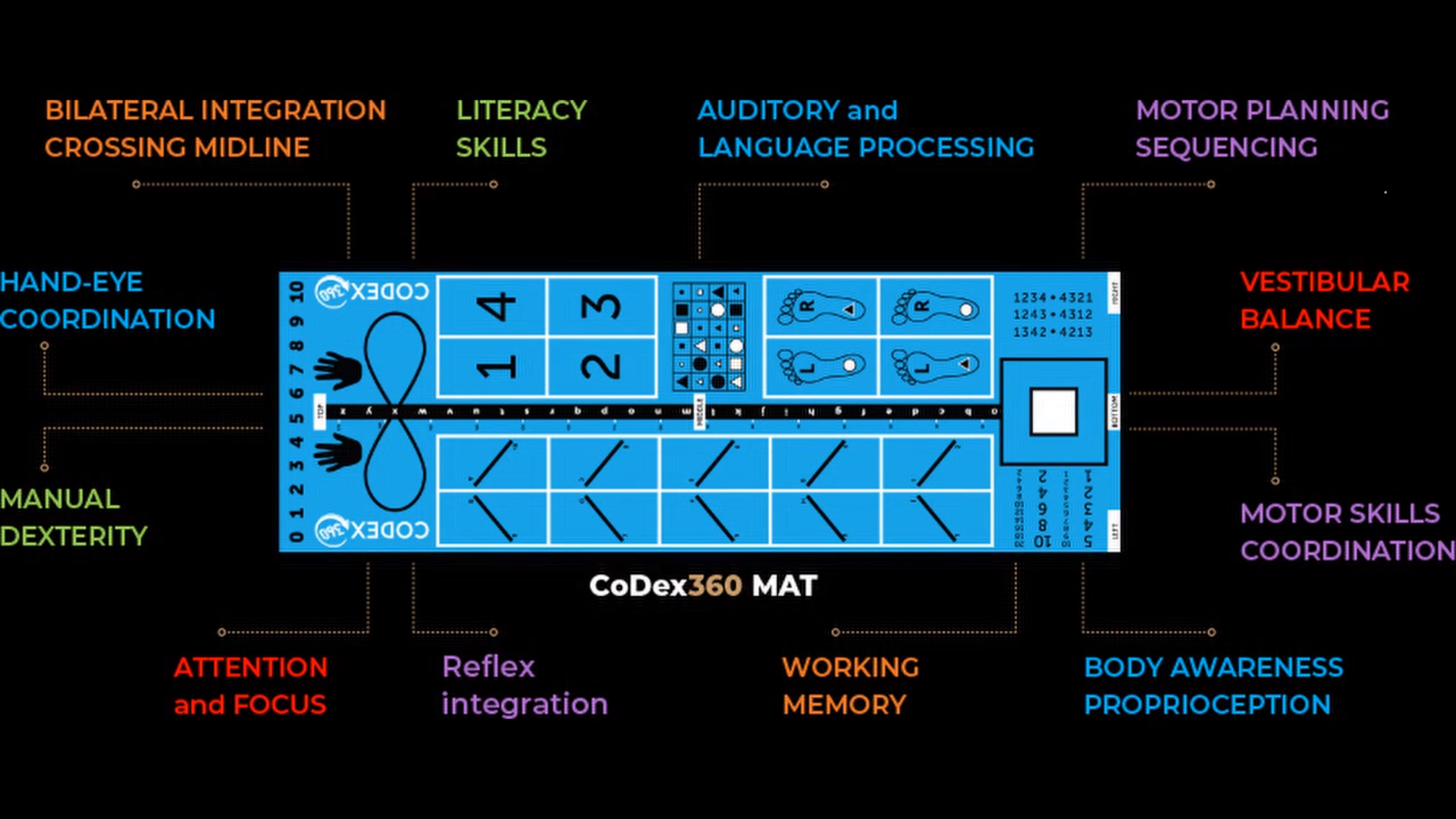
The importance of a growth mindset in developing self-esteem is significant:
1. Embracing Challenges:
People with a growth mindset see challenges as opportunities to learn and grow, rather than as threats. This positive attitude fosters resilience and perseverance, leading to increased self-confidence and self-esteem.
2. Willingness to Learn:
Individuals with a growth mindset are more open to acquiring new skills and knowledge. As they see failures as learning experiences, they are less likely to feel discouraged by setbacks, which boosts their sense of self-worth.
3. Effort and Improvement:
With a growth mindset, individuals focus on effort and improvement rather than comparing themselves to others.
This fosters a healthier sense of self-esteem, as they recognize their progress and achievements based on their personal
growth, not external validation.
4. Reducing Self-Criticism:
A growth mindset helps people be kinder to themselves and less self-critical.
They understand that their abilities are not fixed, which reduces the pressure to be perfect and fosters a more positive self-image.
5. Encouraging Resilience:
When faced with failures or setbacks, individuals with a growth mindset are more likely to bounce back and try again, promoting a stronger sense of self-esteem and belief in their capabilities.
Overall, a growth mindset promotes a healthier and more resilient self-esteem by encouraging individuals to embrace challenges, value effort, and focus on personal growth.
It empowers individuals to approach life with a positive attitude, leading to greater self-confidence and a stronger sense of self-worth.
Within our sessions , a Growth Mindset is taught , learnt, practiced , evaluated, drawn, visually delivered, enhanced and practiced in all sessions.
“Consistency “ is the key and in this modern day where children are brought up in , consistency and discipline are NOT focused upon within their daily lives.
Social media , the internet teaches children “consistently” to jump from one topic to another and therefore attention and focused learning is not part of their DNA. We deliver on this ( when parents and the pupil work with us on this self help area) .
Focus & Attention (why do children need them in school ? )
Cultivating focus and attention in school empowers children to become active learners, enhances their academic performance, and supports their overall cognitive, emotional, and social development during this critical phase of their education.
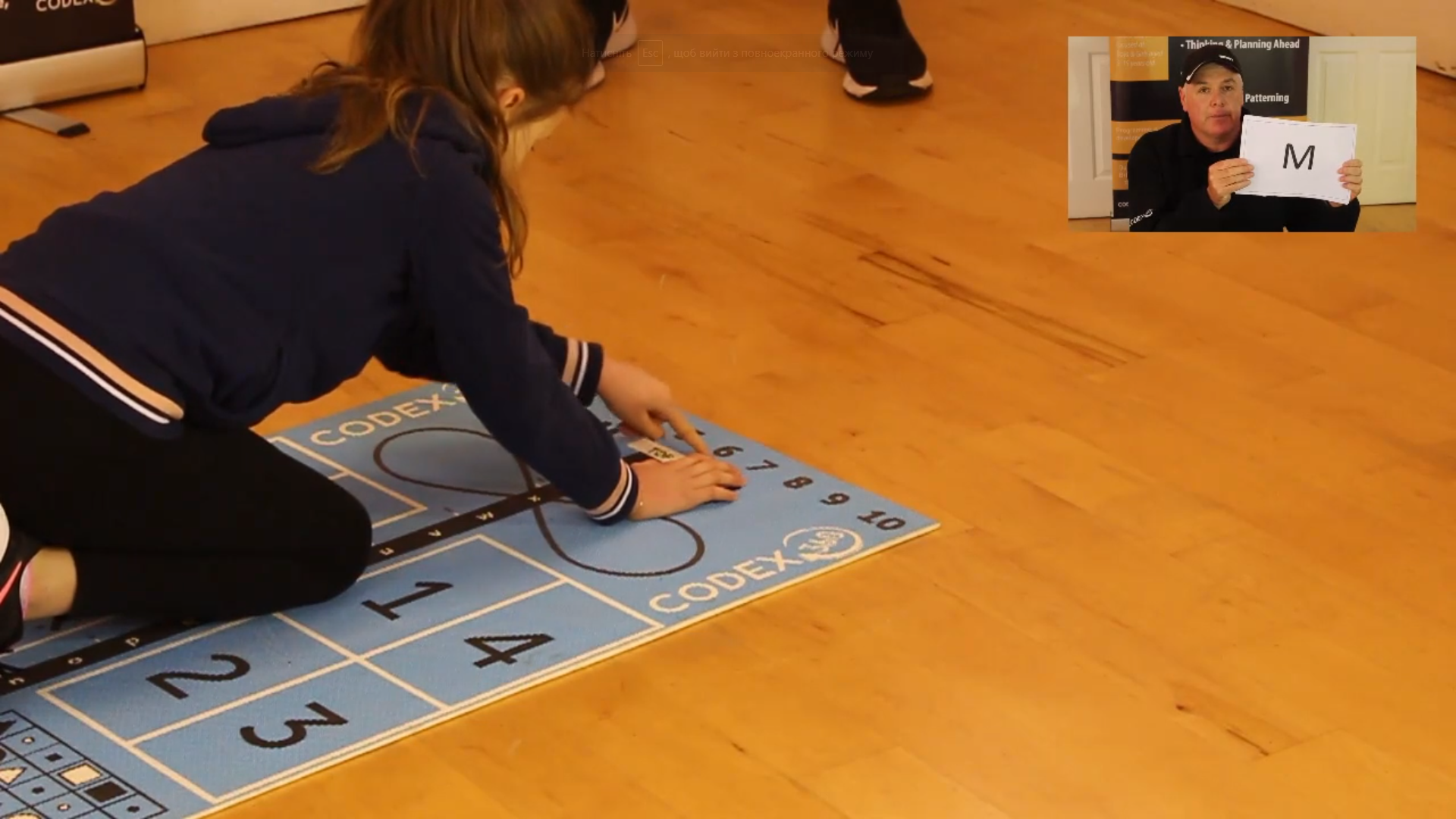
Children aged 6-12 years old need the skills of focus and attention in school for several important reasons:
- Learning and Absorbing Information:
Focus and attention are crucial for children to effectively learn and absorb new information presented in the classroom.
Being able to concentrate on lessons, instructions, and assignments allows them to understand the subject matter better. - Active Participation:
When children can maintain focus and attention, they are more likely to actively participate in class discussions and activities.Engaging in classroom interactions helps them develop social and communication skills.
- Task Completion:
Developing focus and attention helps children stay on task and complete assignments within designated time frames. This skill is essential for academic success as well as for building a sense of accomplishment and confidence. - Retaining Information:
Attention is critical for memory consolidation. Children who pay attention during lessons are more likely to remember and retain what they have learned, enabling them to apply knowledge in the future.
- Following Instructions:
The ability to focus and pay attention allows children to follow instructions given by teachers accurately.
This ensures they can execute tasks correctly and understand the expectations in various learning situations. - Problem-Solving and Critical Thinking:
When children can focus on a problem or task, they can engage in critical thinking and problem-solving skills effectively. Concentration enables them to analyze information, draw conclusions, and make informed decisions. - Self-Regulation:
Learning to maintain focus and attention requires self-regulation, a vital skill for emotional and behavioural development. Children become better at managing impulses and controlling distractions, leading to improved behaviour in the classroom. - Building Confidence:
As children develop their focus and attention skills, they gain confidence in their abilities to learn and succeed academically. This positive reinforcement encourages them to take on new challenges and explore their potential. - Transitioning Between Tasks:
The ability to transition smoothly from one task to another requires focus and attention. This skill is valuable in managing time effectively and adapting to different classroom activities.
Overall, cultivating focus and attention in school empowers children to become active learners, enhances their academic performance, and supports their overall cognitive, emotional, and social development during this critical phase of their education.
During our sessions at Codex360 we help children with these skills. Firstly we break it down into language that the children understand. Then we focus on a skill and then adapt that into a movement activity whilst working on the skill. They see this as “play” or a fun sports/athletic development activity. We then work on this activity consistently over a period of days/ weeks / months by reassessing our Individual Education Programme and measuring to see if the skills have improved. Focused consistency is a key component for children to learn new skills.
Executive Functions (what are they and why do children need to learn them ?)
Executive functions refer to a set of cognitive processes that help individuals regulate, control, and manage their thoughts, behaviours, and emotions to achieve goals and adapt to different situations effectively.
These functions are critical for self-regulation, planning, problem-solving, decision-making, attention, and working memory. Executive functions play a significant role in various aspects of life, including academics, social interactions, and daily activities.

Children need to learn executive functions for several reasons:
- Academic Success: Executive functions, such as attention, working memory, and planning, are essential for academic achievement. They help children stay focused during lessons, organize their thoughts, and manage time effectively for tasks and assignments.
- Social Skills: Developing executive functions enables children to control impulses, consider others' perspectives, and regulate emotions. These skills are vital for forming and maintaining healthy relationships with peers and adults.
- Behavioural Self-Regulation: Learning executive functions helps children manage their behaviour, control impulses, and make informed decisions. This fosters positive behaviour and reduces impulsive or disruptive actions.
- Problem-Solving: Executive functions, particularly cognitive flexibility and planning, aid children in analysing problems, exploring different solutions, and selecting the most appropriate course of action to overcome challenges.
- Emotional Regulation: Children who have well-developed executive functions can regulate their emotions more effectively. This allows them to cope with stress, frustration, and disappointment in a healthier manner.
- Independence and Autonomy: As children acquire executive function skills, they become more independent and autonomous in managing their daily routines and responsibilities.
- Goal Setting: Executive functions support children in setting achievable goals, breaking them down into smaller steps, and working towards accomplishing them, promoting a sense of accomplishment and self-efficacy.
- Adaptability: Executive functions help children adapt to new environments, changing circumstances, and unexpected situations by flexibly adjusting their thoughts and behaviours.
- Life Skills: These cognitive processes are fundamental life skills that are valuable beyond the school setting, helping children become successful and well-functioning individuals in various aspects of their lives.
By nurturing and developing executive functions, children can enhance their overall cognitive abilities, emotional intelligence, and social competence, setting a strong foundation for lifelong learning, well-being, and success.
Teachers, parents, and caregivers can play a crucial role in supporting the development of executive functions through structured activities, consistent reinforcement, and creating an environment that encourages exploration and growth.
Crossing the Midline (and its importance within a child’s development)
Crossing the midline is a term used to describe the ability of a child to reach across their body’s imaginary midline with their arms or legs to perform tasks on the opposite side.
The midline is an imaginary line that divides the body into left and right halves. When a child crosses this line with their body parts, it requires coordination between the two hemispheres of the brain and promotes bilateral integration.
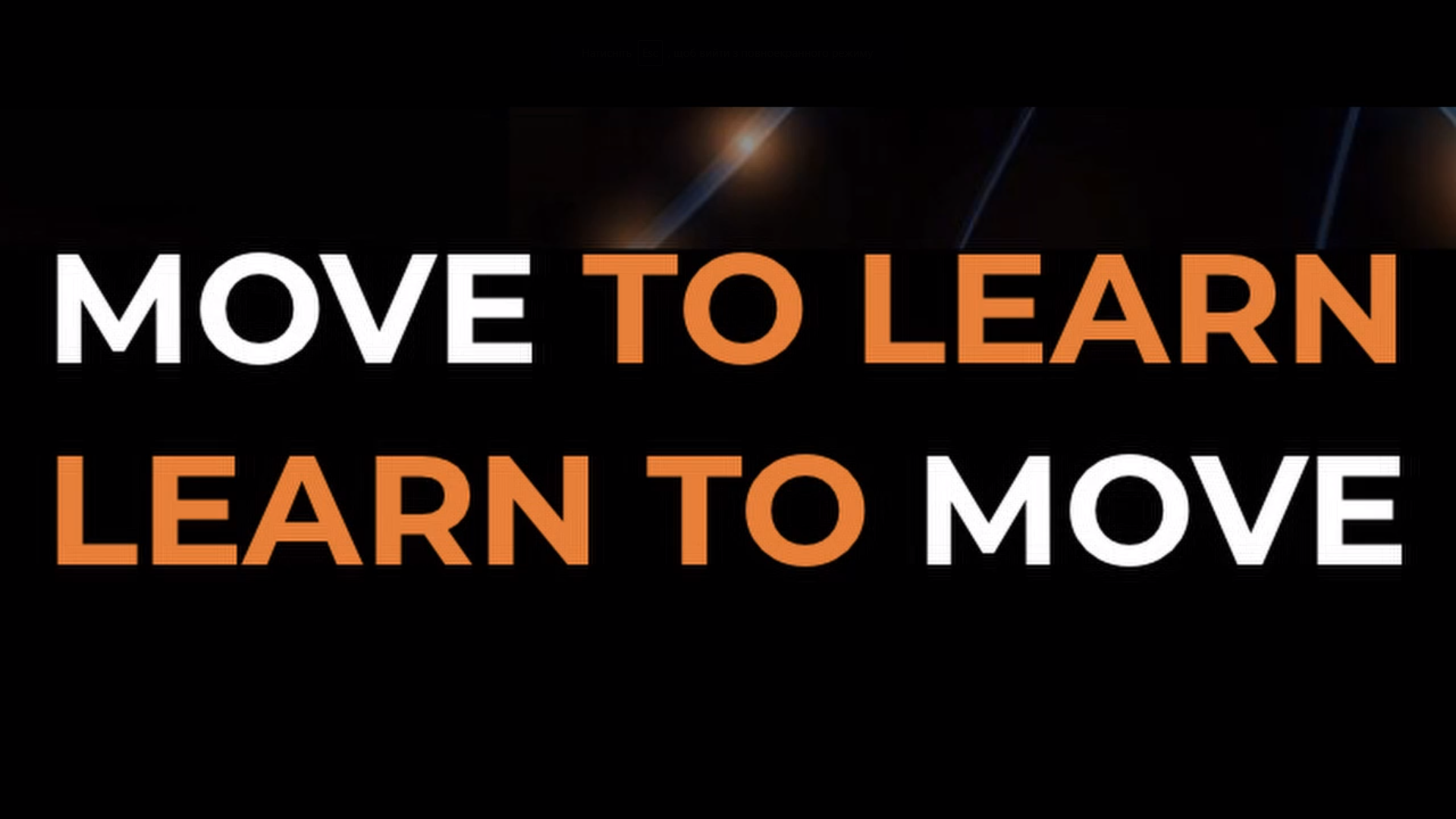
Crossing the midline is important for a child's development for several reasons:
- Brain Hemisphere Integration:
Crossing the midline encourages communication and coordination between the left and right hemispheres of the brain. This enhances neural connections and supports overall brain development.
- Fine and Gross Motor Skills:
Activities that involve crossing the midline, such as drawing a line from one side of the paper to the other or crossing one leg over the other, help develop both fine motor skills (using smaller muscles) and gross motor skills (using larger muscles). - Hand-Eye Coordination:
Tasks that require crossing the midline help improve hand-eye coordination.
For instance, reaching across the body to pick up objects or catch a ball involves coordinating visual information with motor movements. - Reading and Writing:
Crossing the midline is essential for the development of pre-reading and pre-writing skills. For example, when a child uses their dominant hand to draw a line from left to right, it helps prepare them for the left-to-right progression of reading and writing in many languages.
Bilateral Integration:
Crossing the midline supports the integration of both sides of the body, allowing children to use both hands or legs efficiently together for more complex activities.- Spatial Awareness:
Activities involving crossing the midline help children develop a sense of spatial awareness, allowing them to understand the position of objects in relation to themselves and others. - Body Awareness:
Children become more aware of their body’s movements and spatial orientation when they engage in midline crossing tasks, which can improve overall body coordination. - Cognitive Development:
Crossing the midline exercises both sides of the brain, promoting cognitive development and enhancing problem-solving and creative thinking abilities.
Encouraging and promoting activities that involve crossing the midline during a child’s early developmental years can have a positive impact on their physical, cognitive, and academic skills. Such activities can be incorporated into play, sports, art, and daily routines to support the child’s holistic development.
The Codex360MAT has a vast number of exercises to challenge crossing the midline. In a fun and challenging manner, the Bronze Codex360MAT programme takes parents and children through a number of exercises that can stimulate and enhance the skills of crossing the midline.
Primitive Reflexes (and their importance within a child’s development)
Primitive reflexes are automatic, involuntary movements that infants are born with. These reflexes emerge early in prenatal development and are present at birth or shortly thereafter.
They are typically controlled by the brainstem and are essential for basic survival and development during the early stages of life.
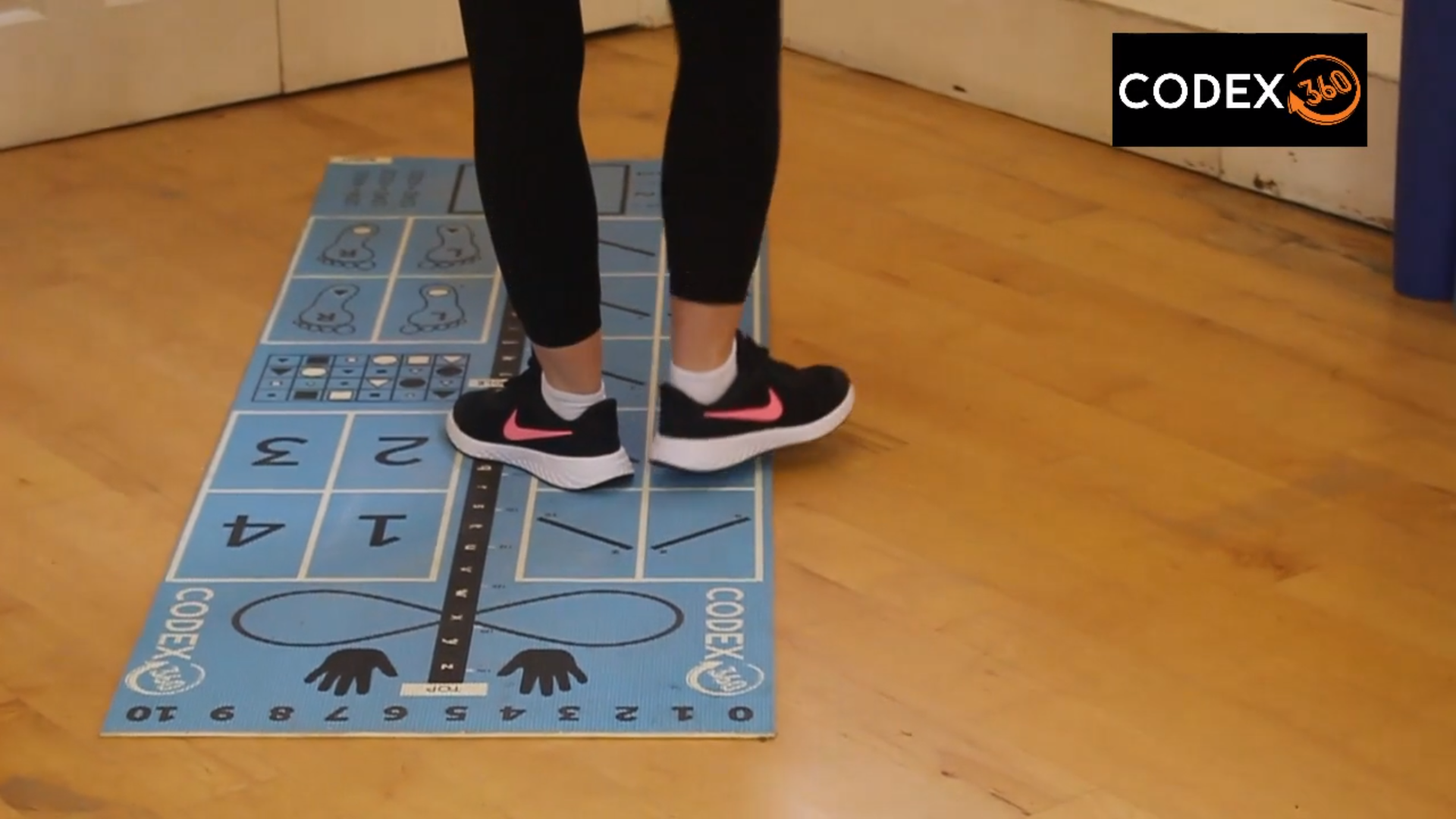
Primitive reflexes serve several important purposes in a child's development:
- Survival and Protection: Primitive reflexes are designed to help newborns respond to their environment and protect themselves. For example, the Moro reflex, often referred to as the startle reflex, helps infants react to sudden changes in their environment, such as loud noises or abrupt movements.
- Motor Skill Development: These reflexes play a role in the early development of motor skills. They provide the foundation for more complex voluntary movements that develop later in infancy and childhood.
- Neural Development: Primitive reflexes help stimulate the development of neural pathways in the brain. As infants experience and respond to various stimuli, neural connections are formed, laying the groundwork for future cognitive and motor development.
- Sensory Integration: These reflexes help infants integrate sensory information from their environment, allowing them to make sense of the world around them. For example, the rooting reflex helps infants find and latch onto a nipple for feeding.
- Assessment of Neurological Development: The presence, absence, or persistence of primitive reflexes can be used as indicators of a child's neurological development. If certain reflexes persist beyond their expected age, it may signal potential developmental delays or neurological issues that require further evaluation.
- Transition to Voluntary Movements: As a child grows and develops, primitive reflexes gradually integrate and transform into more controlled, voluntary movements. This process is crucial for achieving important milestones like crawling, walking, and grasping objects intentionally.
- Postural Control and Balance: Primitive reflexes contribute to the development of postural control and balance, which are fundamental for maintaining stability during movement and standing.
- Social and Emotional Development: The bonding experience and communication between caregivers and infants are facilitated by some of these reflexes. For instance, the rooting reflex helps infants seek nourishment through interactions with their caregivers during feeding.
As a child matures, these primitive reflexes are typically replaced by more sophisticated voluntary movements and responses. The transition from primitive reflexes to purposeful actions is a vital aspect of the child’s early development and is closely monitored by healthcare professionals and caregivers.
The integration of these reflexes is an essential step in a child’s neurological maturation and overall growth.
There are several specific primitive reflexes that are typically present in newborns and young infants. These reflexes serve various functions during early development. Here are some of the common primitive reflexes:
- Moro Reflex (Startle Reflex):
This reflex is triggered by a sudden change in position or loud noise. When an infant feels a sudden jolt or hears a loud sound, they react by extending their arms and legs, then quickly bringing them back toward their body. - Rooting Reflex:
When a baby’s cheek is stroked or touched, they turn their head and open their mouth, seeking to suckle and find a nipple for feeding. - Sucking Reflex:
When an object is placed in a baby’s mouth, they instinctively suck on it, which is essential for feeding and nourishment. - Palmar Grasp Reflex:
When an object is placed in a baby’s palm or fingers, they grasp it firmly. This reflex helps with the development of hand and finger coordination. - Plantar Grasp Reflex:
When the sole of a baby’s foot is touched, they curl their toes in response. This reflex helps prepare them for standing and walking later on. - Babinski Reflex:
When the sole of a baby’s foot is stroked from the heel toward the toes, their big toe moves upward, and the other toes fan out. This reflex is thought to be related to the development of the nervous system. - Tonic Neck Reflex (Fencing Reflex):
When a baby’s head is turned to one side, the arm on that side extends while the opposite arm flexes. This reflex is sometimes called the “fencing position” due to the posture it resembles. - Galant Reflex:
When the skin along the spine of a baby is stroked, they move their body toward that side. This reflex is thought to be related to the development of the spinal cord. - Stepping Reflex:
When a baby is held upright with their feet touching a flat surface, they lift one foot after another as if walking. This reflex helps prepare them for walking later on.
Sequencing and Patterning ( and their cognitive importance within a child’s development )
Sequencing and patterning are important cognitive skills that play a crucial role in a child’s development.
They are fundamental building blocks for various aspects of learning and daily life.

Here's why sequencing and patterning are essential:
- Language Development: Sequencing is closely linked to language development. Understanding the order of events, such as first, next, and last, helps children comprehend stories, follow instructions, and express themselves more effectively.
- Math Skills: Patterning is a foundational concept in mathematics. Recognizing and creating patterns, such as repeating sequences or ABAB patterns, lays the groundwork for understanding more complex mathematical concepts later on.
- Memory and Recall: Sequencing tasks help enhance a child's memory and recall abilities. Remembering and reproducing sequences of numbers, letters, or events in the correct order supports memory development.
- Problem-Solving: Both sequencing and patterning involve critical thinking and problem- solving. Children learn to identify patterns in data and apply this knowledge to solve problems and make predictions.
- Reading and Writing: Understanding sequential order is essential for reading comprehension and writing development. Knowing how to organize ideas and information in a logical sequence improves writing coherence and structure.
- Motor Skills: Patterning activities often involve manipulating objects in a specific order, which helps develop fine motor skills and hand-eye coordination.
- Logical Reasoning: Sequencing and patterning encourage logical reasoning skills. Children learn to identify relationships between elements and predict what comes next based on patterns.
- Time Management: Sequencing concepts are important for understanding the passage of time. Learning to order events chronologically helps children grasp concepts like days of the week and months of the year.
- Music and Rhythm: Patterning is evident in music and rhythm. Recognizing and creating musical patterns can foster an appreciation for music and support a child's sense of rhythm.
- Social Skills: Understanding the sequence of social interactions is critical for developing social skills. Recognizing the appropriate order of greetings, taking turns, and resolving conflicts supports positive social interactions.
- Attention and Focus: Sequencing and patterning tasks often require sustained attention and concentration. Practicing these skills helps improve a child's focus and attention span.
Overall, sequencing and patterning are essential cognitive skills that provide a strong foundation for various aspects of a child’s development.
They contribute to language, math, and problem-solving abilities, as well as fostering memory, fine motor skills, and social interactions.
By encouraging and supporting children’s development in these areas, caregivers and educators can help set them up for success in academics and daily life.
Balance and the Vestibular System
Balance is the ability to maintain the body’s center of mass over its base of support, allowing a person to stay upright and stable during various movements and activities. It is an essential aspect of human motor control and coordination.
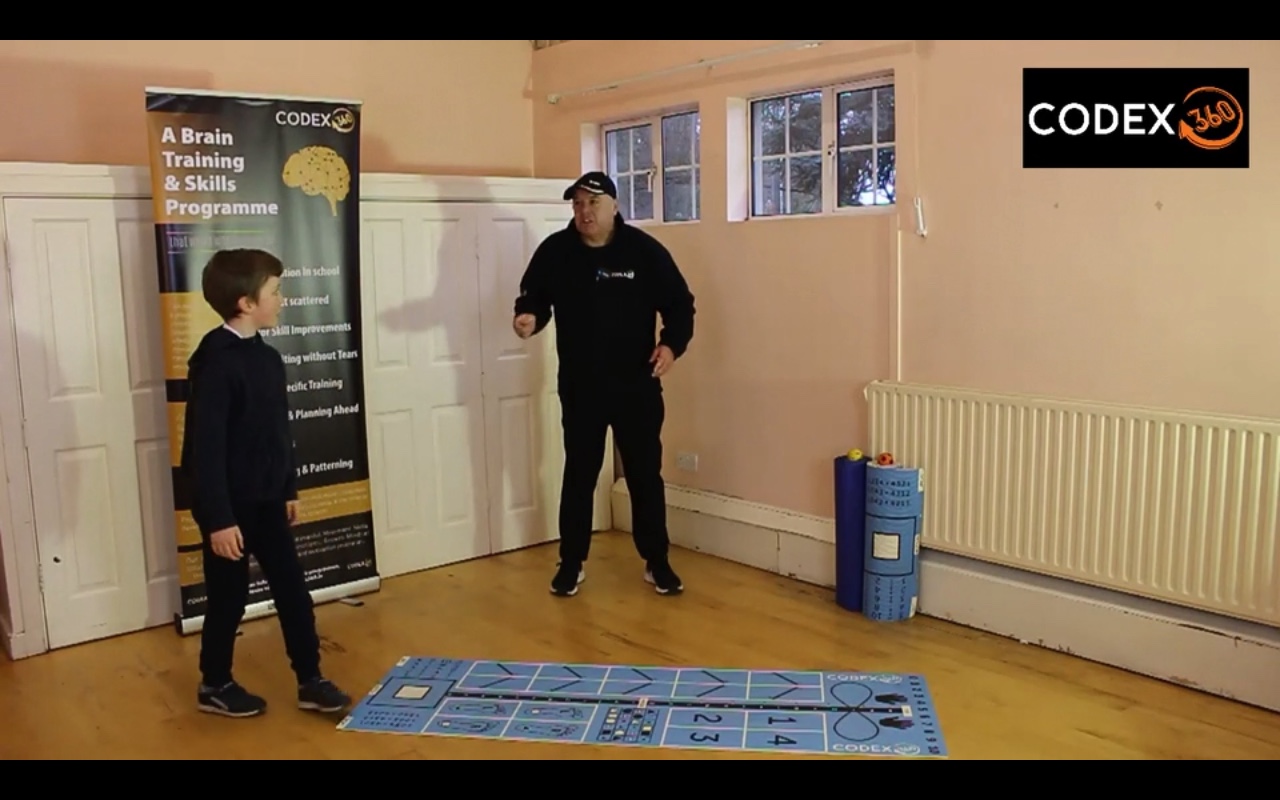
The vestibular system is a sensory system located in the inner ear that plays a crucial role in maintaining balance and spatial orientation. It consists of three semi-circular canals and two otolith organs (the utricle and the saccule).
These structures are filled with fluid and hair-like sensors, which detect changes in head position and movement.
Here's how the vestibular system affects balance:
- Head Movement Detection:
The semi-circular canals are responsible for detecting rotational movements of the head. When the head moves, the fluid in the canals also moves, stimulating the hair cells. This information is sent to the brain to help maintain a stable visual focus and spatial orientation during head movements. - Gravity and Linear Acceleration Sensing:
The otolith organs (utricle and saccule) detect linear acceleration and the influence of gravity. When the head is tilted or the body undergoes linear motion, the movement of calcium crystals (otoconia) in the fluid stimulates the hair cells, providing information about the body's position relative to gravity. - Eye Movements:
The vestibular system is closely connected to the oculomotor system (eye movements). It helps stabilize the eyes during head movements, allowing individuals to maintain a clear and focused visual perception. - Postural Control:
The information from the vestibular system is integrated with inputs from other sensory systems, such as proprioception (sensing the position of body parts) and vision. This integration allows for precise adjustments of muscle activity, leading to postural control and balance. - Balance Responses:When the vestibular system detects changes in head position or movement, it triggers reflexive responses that help maintain balance. For example, if a person starts to fall to one side, the vestibular system sends signals to the muscles in the legs to contract and regain stability.
- Gaze Stability:
The vestibular system helps stabilize gaze during head movements, allowing individuals to keep their vision steady while their body is in motion.
TTRS ( Touch, Type, Read and Spell )
TTRS stands for “Touch-type Read and Spell,” which is a computer-based typing program designed to help children and adults improve their touch-typing skills and spelling abilities.
The program is specifically tailored for individuals with dyslexia, ADHD, and other learning difficulties, but it can benefit learners of all abilities.

Here's how the TTRS program benefits children:
- Touch Typing Skills: TTRS focuses on teaching touch typing, which means typing without looking at the keyboard. Learning touch typing improves typing speed and accuracy, which is essential for efficient computer use and productivity in today's digital age.
- Spelling Improvement: The program incorporates a structured spelling component that helps children improve their spelling skills. The interactive exercises use a multisensory approach, reinforcing spelling patterns and word recognition.
- Phonics and Decoding Skills: TTRS incorporates phonics and decoding exercises to enhance a child's ability to recognize and decode words. This helps improve reading fluency and comprehension.
- Multisensory Learning: TTRS uses a multisensory approach by combining visual, auditory, and tactile elements in its lessons. This approach caters to different learning styles, making the program more accessible and effective for a wide range of learners.
- Self-Paced Learning: The program allows children to learn at their own pace, providing a non-intimidating environment that fosters confidence and motivation.
- Personalized Learning: TTRS tailors the lessons based on individual progress, ensuring that each child receives a personalized learning experience suited to their needs and abilities.
- Building Confidence: As children progress through the program and improve their typing and spelling skills, they gain confidence in their abilities, which can positively impact their overall academic performance.
- Assistive Technology: TTRS serves as an assistive technology tool for learners with dyslexia, ADHD, and other learning difficulties. It provides additional support in areas where they might face challenges.
- Practical Life Skills: Touch typing is a valuable practical skill that benefits children in their academic pursuits and future career opportunities.
- Engagement and Fun: The program incorporates gamified elements and rewards, making the learning experience engaging and enjoyable for children.
TTRS has been widely used in schools and educational settings as an effective tool to support children’s literacy skills and computer proficiency. It can complement traditional teaching methods and provide additional practice and reinforcement for learners of all ages.
By addressing typing and spelling challenges, TTRS empowers children to become more confident, efficient, and independent learners.
Dyscalculia ( how does it affect a children learning of Numeracy )
Dyscalculia is a specific learning disability that affects a child’s ability to understand and work with numbers, mathematical concepts, and arithmetic. It is sometimes referred to as “math dyslexia” because, like dyslexia, it involves difficulties in a specific area of learning, in
this case, mathematics.

Children with dyscalculia may experience various challenges in numeracy, including:
- Number Recognition:
Difficulty recognizing and understanding numerals and their
quantities. - Counting Skills:
Struggling to count in sequence or skip-counting. - Arithmetic Operations:
Difficulty with basic arithmetic operations like addition, subtraction, multiplication, and division. - Conceptual Understanding:
truggling to grasp fundamental mathematical concepts like place value, fractions, and decimals. - Mental Arithmetic:
Difficulty performing mental calculations quickly and accurately. - Estimation:
Struggling to make reasonable estimates of quantities or measurements. - Time and Money Concepts:
Challenges with understanding and managing time and money. - Problem-Solving:
Difficulty applying mathematical concepts to solve problems in real-life situations.
The impact of dyscalculia on children’s learning of numeracy can vary depending on the severity of the condition and the support provided. It can affect academic performance, self-confidence, and overall mathematical reasoning. Children with dyscalculia may experience frustration, anxiety, and a lack of interest in mathematics due to their difficulties in grasping
mathematical concepts and keeping up with their peers.
It is essential to identify dyscalculia early and provide appropriate interventions and accommodations to support the child’s learning needs. Remediation may involve specialized teaching methods, hands-on learning activities, visual aids, and the use of manipulatives to help build a strong foundation in numeracy.
In addition to educational support, children with dyscalculia may benefit from a multi-disciplinary approach that involves collaboration between teachers, parents, and educational specialists. Early intervention and ongoing support can help children with dyscalculia overcome their challenges and develop essential mathematical skills, boosting their confidence and academic success in mathematics.
CoDex360 MAT: A practical workshop in the Codex360 MAT – learn about the research behind the CoDex360 MAT, how to use the mat and adapt it for specific skill areas. We offer workshops for individuals or groups. Fees include the CoDex360 MAT and access to the Bronze Programme.

Move-to-Learn & Learn-to-Move: A comprehensive training course based around fundamental movement skills (FMS), layered with information about sensory skills, attention, speech & language and academic skills. The course with cover the Move-to-Learn & Learn-to-Move Model for assessment and intervention.

Auditory Processing Disorders – sharing the knowledge. A journey through identification, assessment and intervention.
Developmental Coordination Disorder/Dyspraxia – a personal journey with information on the identification, assessment process and intervention. This is a hands-on course equipping the learner with practical skills to use at home/in the clinic.
Learn to Read, Learn to Write – a practical on-line course on acquiring, developing and mastering literacy skills.
